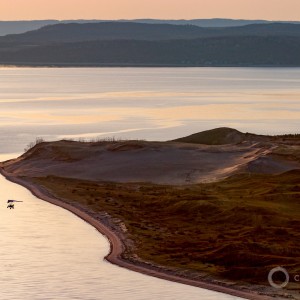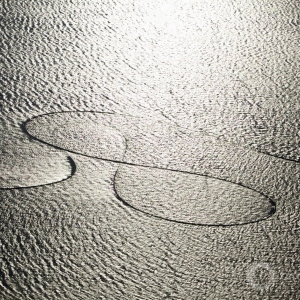Federal Water Tap, April 6: Pelosi Says Water a Key Part of Next Coronavirus Stimulus Bill
The Rundown
House leadership elevates water infrastructure for the next stimulus bill. EPA Inspector General finds a large decline in agency inspections and enforcement actions since 2007. The Army Corps evaluates the spread of invasive zebra mussels in its districts. NASA develops groundwater and soil moisture forecasts. USDA allows delayed payments for rural water infrastructure loans. U.S. Geological Survey researchers find that warm water was a barrier for spawning salmon in the Yakima River last summer. And lastly, USAID seeks an organization to run a Central Asia water cooperation program.
“Clean water — that’s part of our infrastructure proposal, always has been, now more than ever, necessary. Dependable drinking water, clean water, wastewater infrastructure are critical in the effort to limit the spread of the coronavirus.” — Rep. Nancy Pelosi (D-CA), the House speaker, speaking at a press conference on April 2 about the importance of water infrastructure in the next coronavirus stimulus bill that Congress will consider.
By the Numbers
33 percent: Decrease in the number of inspections conducted by the EPA when comparing the years 2007 and 2018. In those same years, the number of enforcement actions with penalties decreased by 53 percent. The comparison is not an aberration. There is a steady downward trend from the beginning of the Obama administration until today in the number of inspections and enforcement actions. (EPA Inspector General)
News Briefs
Stimulus Bill: Just Add Water
Politicians in Washington began staking their positions for a fourth coronavirus emergency relief bill.
On a press call on Thursday, House Speaker Nancy Pelosi reiterated what she said earlier in the week: that Democrats will insist that infrastructure be a central focus of the next stimulus bill and that water will not be ignored.
“Clean water,” Pelosi said while outlining potential pieces of a stimulus bill. “That’s part of our infrastructure proposal, always has been, now more than ever, necessary. Dependable drinking water, clean water, wastewater infrastructure are critical in the effort to limit the spread of the coronavirus.”
President Trump has signaled his interest in working on an infrastructure package.
House Democrats are using a framework unveiled in January as their starting point for negotiations. The Moving Forward framework included $50.5 billion in clean water investment — from sewer upgrades and PFAS treatment to stormwater retention and worker training — as well as $25.4 billion for drinking water programs.
Congress is on break and scheduled to reconvene April 20.
In context: $1.5 Billion for Water-Bill Assistance Inserted in House Democrats’ Coronavirus Aid Package
Water and Sewer Loan Deferrals
Because of the Covid-19 outbreak, the U.S. Department of Agriculture’s rural aid agency is allowing loan payments for water and sewer projects, among other utility projects, to be delayed by up to 180 days.
Initial payment deferrals can occur through September 30, 2020.
Studies and Reports
Groundwater Forecasting
Based on satellite measurements, NASA has developed seasonal forecasts of shallow groundwater and soil moisture.
The forecasts — for 30, 60, and 90 days — currently show high saturation in the upper Midwest. Because the ground is essentially a soaked sponge, that region has an above-average risk of flooding this spring.
Army Corps Zebra Mussels
Invasive zebra mussels, which damage water infrastructure and increase maintenance costs, are found in two-thirds of Army Corps districts, according to an agency assessment.
Hitching rides on boats, zebra mussels proliferate in new water once established. They are filter feeders, which produce clearer waters, though in many cases that is no benefit. Clearer waters stimulate algae growth and disrupt native ecosystems. The mussels increase costs by clogging water in-take pipes at dams, blocking the movement of lock gates, and accelerating corrosion on uncoated metal surfaces.
Zebra mussels are most prevalent in the Great Lakes states, where they were first introduced in the 1980s.
In two western districts that are on the edge of an invasion, there is “a sense of dread,” according to the report. Those districts are Albuquerque, which includes New Mexico and parts of western Texas and southeastern Colorado, and Omaha, which covers the upper Missouri River basin.
Salmon Behavior in Yakima River
The U.S. Geological Survey released 60 tagged sockeye salmon into the Yakima River, in Washington state, last summer and found that high water temperatures affected their behavior.
Salmon move upstream to spawn, but water temperatures above 77 degrees Fahrenheit can be lethal to the fish.
Researchers released 46 fish at the mouth of the Yakima in July and 14 fish at a dam about 45 miles upstream in June. Water temperatures in the Yakima between June and mid-September were between 68 and 77 degrees.
Of the fish released at the dam, one was not detected and the others all moved downstream into the cooler Columbia River. Of the 46 released at the mouth, half were never detected. Only eight moved into the Yakima — all after September 9, when water temperatures cooled — while the rest stayed in the Columbia.
The fish that did not enter the Yakima either moved to another river or died. The researchers conclude that hot water was a barrier to spawning.
On the Radar
USAID Seeks Central Asia Water Contractor
The U.S. Agency for International Development is soliciting proposals to lead a five-year program to strengthen cooperation among five Central Asian countries over water resources.
The program objective — while working in Kazakhstan, Kyrgyzstan, Tajikistan, Turkmenistan, and Uzbekistan — is to promote sustainable management of shared river systems in order to reduce regional conflict and aid economic growth and healthy ecosystems.
The ceiling for the contract is between $23 million and $24.9 million.
Federal Water Tap is a weekly digest spotting trends in U.S. government water policy. To get more water news, follow Circle of Blue on Twitter and sign up for our newsletter.
Brett writes about agriculture, energy, infrastructure, and the politics and economics of water in the United States. He also writes the Federal Water Tap, Circle of Blue’s weekly digest of U.S. government water news. He is the winner of two Society of Environmental Journalists reporting awards, one of the top honors in American environmental journalism: first place for explanatory reporting for a series on septic system pollution in the United States(2016) and third place for beat reporting in a small market (2014). He received the Sierra Club’s Distinguished Service Award in 2018. Brett lives in Seattle, where he hikes the mountains and bakes pies. Contact Brett Walton






Leave a Reply
Want to join the discussion?Feel free to contribute!